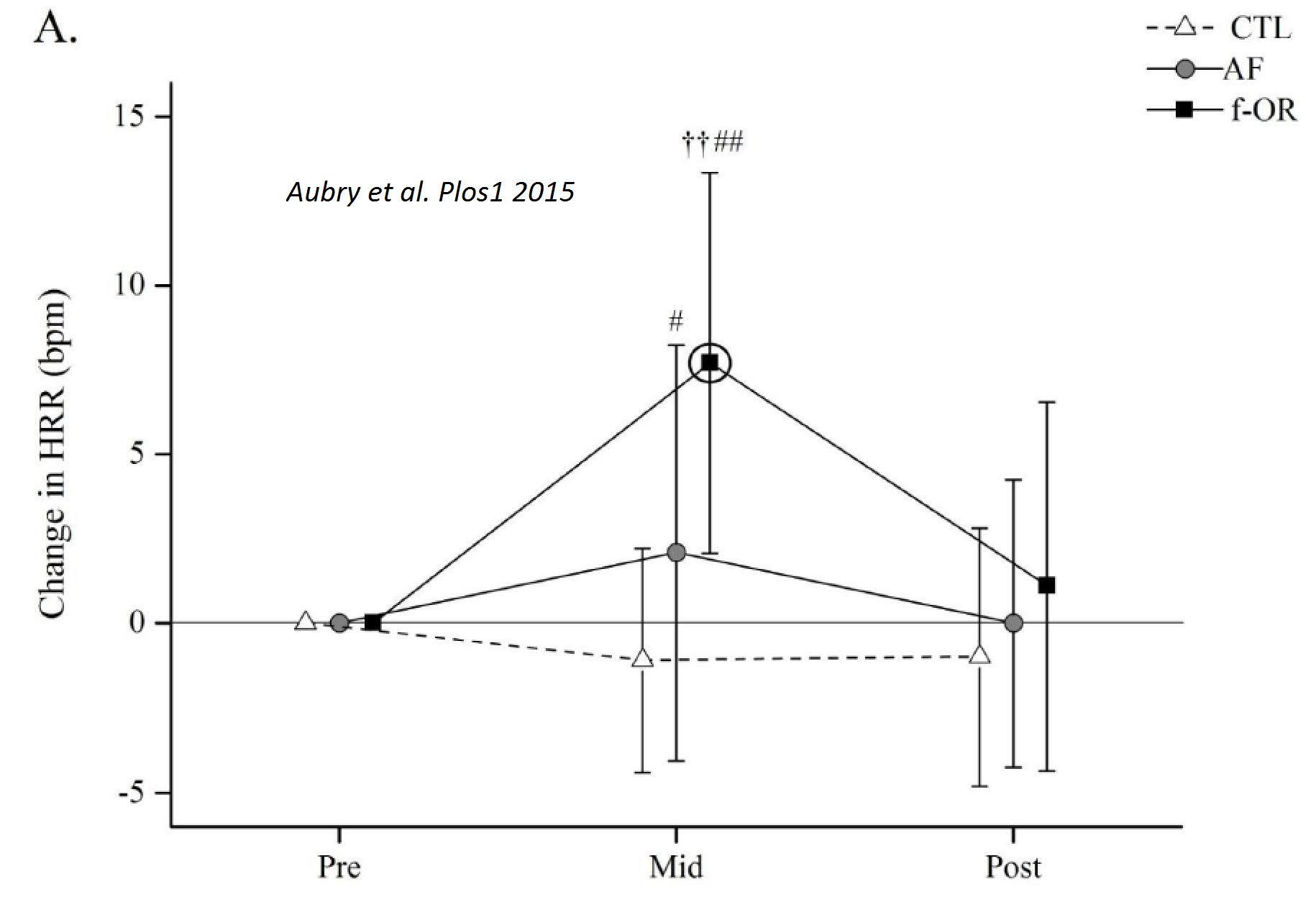The development of functional overreaching is associated with a faster heart rate recovery in endurance athletes
Aubry A, Hausswirth C, Louis J, Coutts AJ, Buchheit M & Le Meur Y. The development of functional overreaching is associated with a faster heart rate recovery in endurance athletes. Plos1, In press.
Purpose: The aim of the study was to investigate whether heart rate recovery (HRR)
may represent an effective marker of functional overreaching (f-OR) in endurance
athletes. Methods and Results: Thirty-one experienced male triathletes were tested (10
control and 21 overload subjects) before (Pre), and immediately after an overload
training period (Mid) and after a 2-week taper (Post). Physiological responses were
assessed during an incremental cycling protocol to exhaustion, including heart rate,
catecholamine release and blood lactate concentration. Ten participants from the
overload group developed signs of f-OR at Mid (i.e. -2.1 ± 0.8% decreased
performance with concomitant high perceived fatigue). Additionally, only the f-OR
group demonstrated a 99% chance to demonstrate an increase in HRR during the
overload period (+8 ± 5 bpm, large effect size). Concomitantly, this group also revealed
a >80% chance of decreasing blood lactate (-11 ± 14%, large), plasma norepinephrine
(-12 ± 37%, small) and plasma epinephrine peak concentrations (-51 ± 22%,
moderate). These blood measures returned to baseline levels at Post. HRR change
was negatively correlated to changes in performance, peak HR and peak blood
metabolites concentrations. Conclusion: These findings suggest that i) a faster HRR is
not systematically associated with improved physical performance, ii) changes in HRR
should be interpreted in the context of the specific training phase, the athletes
perceived level of fatigue and the performance response; and, iii) the faster HRR
associated with f-OR may be induced by a decreased central command and by a lower
chemoreflex activity.
 CTL: controls; AF: acute fatigue; f-OR: functional overreaching.
CTL: controls; AF: acute fatigue; f-OR: functional overreaching.








